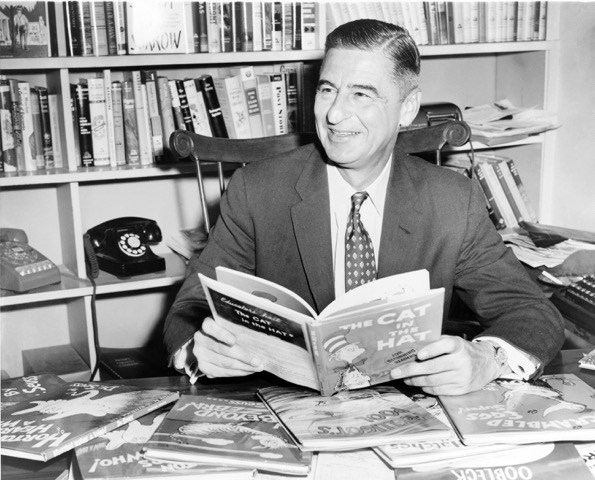Exploring the Bounds of Fair Use: Dr. Seuss

Last June, Dr. Seuss Enterprises (“DSE”), filed a lawsuit against ComicMix, a company that created a book titled “Oh, The Places You’ll Boldly Go!” (“Boldly”), for copyright infringement in the U.S. District Court for the Southern District of California. The book, which ComicMix called a mash-up, combined various characteristics of Dr. Seuss’ original “Oh, the Places You’ll Go!” book (“Go!”) with “certain characters, imagery, and other elements from Star Trek”. Dr. Seuss claimed that “Boldly ‘misappropriate[d] key elements’ of Go! and four other Dr. Seuss books.”
Boldly used many of the scenes and illustrations from Go!, but crafted each scene and illustration from a Star Trek perspective. Many of the recognizable Seussian-like characters were replaced with characters outfitted in Star Trek gear and given Star Trek features. This contributed to the court finding ComicMix’s use “transformative” under factor one of the fair use test. The court, in its opinion issued on June 9, 2017, stated that while “Go!’s rhyming lines and striking images . . . are often copied by Boldly, . . . the copied elements are always interspersed with original writing and illustrations that transform Go!’s pages into repurposed, Star-Trek–centric ones.” ComicMix succeeded in adding “new expressive content or message,” which helped tip the first fair use factor in its favor.
Interestingly, before DSE filed suit, ComicMix advertised its book as a parody that it “fully [believed fell] . . . within the boundary of fair use”. The court didn’t accept ComicMix’s parody argument, disqualifying Boldly’s use from being entitled to the “broad protection” that parodies receive under the fair use doctrine. While recognizing Boldly as a mash-up, the court found no juxtaposition between Boldly and Go! that “creat[ed] ‘comic effect or ridicule’ . . . Boldly merely use[d] Go!’s illustration style and story form as a means of conveying particular adventures and tropes from the Star Trek canon.” (emphasis added). The court couldn’t conclude “‘that such a ‘parodic character may reasonably be perceived.’”
But despite the court finding ComicMix’s use of Boldly transformative, its fair use defense still failed. Why is that? Let’s take a look . . .
ComicMix’s Use May Have an Effect on Dr. Seuss’ Potential Market
When the court first discussed whether Boldly would have “a substantially adverse impact on the potential market[] for the original []”, the court noted that ComicMix didn’t provide any evidence to refute DSE’s statement that “‘[i]t is not uncommon for DSE to license’ its works, including in ‘collaborations with other rights holders.’” Furthermore, the court presumed potential harm to the Plaintiff, but found this harm neutralized as Boldly didn’t “substitute for the original and serve[d] a different market function than Go!.” The court noted “Boldly’s market relies on consumers who” are already familiar with Go! and other Dr. Seuss books, along with Star Trek.
In looking again at the potential market factor, the court found that it was wrong to presume market harm to the Plaintiff under such circumstances. Market harm may be presumed by the court “when the second work supersedes the original and ‘serves as a market replacement for it, making it likely that cognizable market harm to the original will occur.’” However, the second work’s transformative nature directly impacts the market harm analysis. When the second work is found to be transformative, “market substitution is at least less certain, and market harm may not be so readily inferred.[]” In this case, because Boldly was found transformative, the court didn’t presume market harm.
Despite the court’s “transformative” finding, the fourth fair use factor favored DSE. The court noted that when considering the market for potential derivative works, it “includes only those that creators of original works would in general develop or license others to develop.[]” That includes mash-up books, like ComicMix’s, despite ComicMix’s arguments that DSE had never licensed any derivative hybrids or crossover works.
DSE had a licensing program where authors could publish books based off of Dr. Seuss’ books and characters. Understanding that the books under DSE’s licensing program weren’t mash-ups similar to Boldly, the court nevertheless found “a potential market for a literary mash-up involving Plaintiff’s books; [and that] such a market would not be unlikely based on Plaintiff’s past licensing programs.” Thus, said the court, Boldly’s production “may result in an adverse impact on Plaintiff’s derivative market”. Consequently, this factor weighed in favor of DSE, with the court finding the information on DSE’s licensing program helpful to “shift[] the balance more in Plaintiff’s favor”. Therefore, after again weighing all four fair use factors, the court found that “Defendants’ fair use defense fail[ed] as a matter of law.”
Key takeaways:
- While a new work may be “transformative”, the degree of the work’s commercial purpose may “affect the overall balance” of the first factor.
- A parody may use the original work so long as it “reasonably could be perceived” as commenting or criticizing the original work. Using the original only “as a means of conveying” the new work is not within a parody.
- The potential derivative works market includes those works that the “creators of original works would in general develop or license others to develop”, and may be evidenced by past licensing deals.
Photo: Courtesy Everett Collection

